At-Home Pad See Ew Recipe
Pad See Ew (chewy pan-fried rice noodles) is the most epic and beloved street food in Thailand, and today, I’m going to teach you how to make it at home with step by step photos, tips and tricks and a pantry friendly sauce! Pad see ew is a soft tangle of chewy rice noodles, juicy chicken (or sub your favorite protein), crisp tender Chinese broccoli and soft eggs enveloped in a light, salty, savory sauce with a kiss of sweetness, a kiss of sour and a kiss of that irresistible charred smokiness. This pad see ew recipe boasts the big signature flavors, contrasting textures and is restaurant delicious but is made with pantry friendly ingredients and is less expensive than dining out. You will also love that this pad see ew recipe is easy to customize to include whatever veggies or protein you like and that it can be on your table in 30 minutes – perfect for all those busy weeknights – but delicious enough for date night. Let’s get cooking!
It’s no secret that Thai food is my favorite cuisine to eat and to make! If you’re a fan of Thai food, you’ll love my Pad Thai, Panang Curry, Thai Basil Chicken, Red Curry, Yellow Curry, Green Curry (taste the rainbow!) Coconut Curry Chicken, Tom Yum Soup, Thai Noodle Soup and Tom Kha Gai.
This is a detailed post all about pad see ew and everything you need to know to be successful at making it at home. You can read on or use the “jump to recipe” button at the top of the post to skip directly to the recipe.
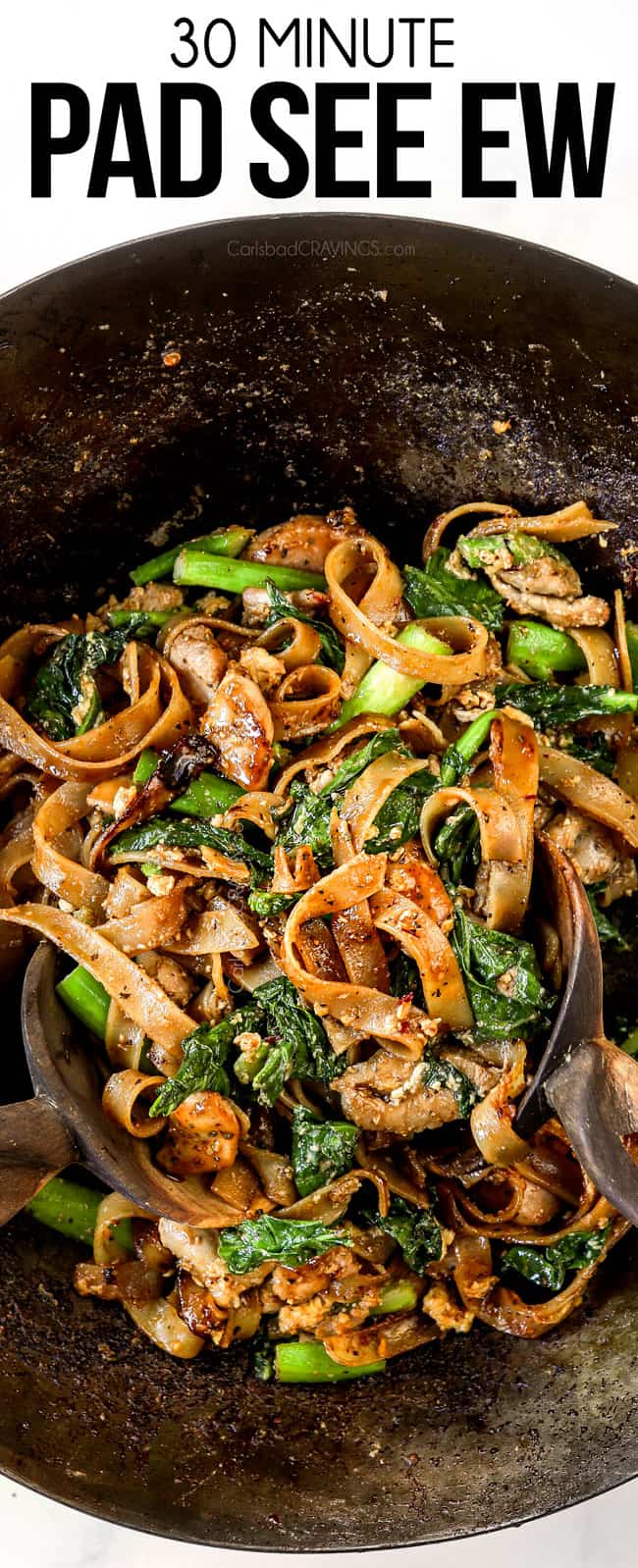
PIN THIS RECIPE TO SAVE FOR LATER
What is Pad See Ew?
Pad see ew ผัดซีอิ๊ว, (sometimes spelled pad siew, pad siu or phat si-Io) is a Thai stir fried rice noodle dish commonly mixed with protein (chicken, pork, beef or shrimp,) vegetables and a rich, savory, sweet and salty soy-based sauce. True to its name in Chinese, pad sew ew translates to “fried (with) soy sauce” (pad meaning fried and see ew meaning soy sauce).
Pad see ew is a Chinese-influenced dish that combines the technique of stir-frying noodles borrowed from Chinese immigrants with the taste of Thailand. Today, pad see ew is the most popular Thai noodle dish in Thailand sold by street vendors and in restaurants throughout the country and in most every Thai restaurant across the United States – because it is AMAZING!
Both pad see ew and pad Thai became popular in World War II when Thailand was facing a rice shortage. Rice noodles, on the other hand, were in abundance so the Thai government encouraged the substitution of rice with rice noodles. The citizens mixed rice noodles with various vegetables and proteins resulting in a new inexpensive, instant classic known as pad see ew that the world has been enjoying ever since.
What does Pad See Ew Taste like?
Pad see ew is characterized by chewy rice noodles, stir fried in a very hot wok until charred, mixed with protein (chicken, pork, beef or shrimp) dark, sweet soy sauce, oyster sauce, Chinese broccoli, and eggs. Pad see ew is sweet from the sweet soy sauce, salty from the oyster sauce, and sour from the vinegar and infused with chargrilled flavor from the caramelized noodles to create a beautifully balanced dish.
The chargrilled flavor is what truly sets pad sew apart from other rice noodle dishes. The subtle charring of the noodles infuses the entire dish with a subtle smokey flavor that’s like a secret ingredient that elevates pad see ew above the rest. What we’re left with is smoky, sweet and savory pad see ew that is truly addicting.
Pad Thai vs Pad See Ew
Both pad sew ew and pad Thai are popular Thai rice noodle dishes made with protein and vegetables. Pad Thai however, is characterized by its nuttiness from crushed peanuts and is more savory and more sour with a kick of heat. Pad sew ew is sweeter, saltier, less sour and made with wider rice noodles infused with that chargrilled flavor. Both are fabulous and unique which means you need to make them both!
Pad See Ew vs Drunken Noodles
Both pad sew ew and drunken noodles are also popular Thai rice noodle dishes. Drunken noodles are a spicy noodle stir-fry whereas pad see ew is mild, served with chili vinegar on the side. Drunken noodles often include ground pork as the protein with vegetables such as baby corn, snow peas, and Thai basil. Pad sew ew is made with a number of thinly sliced proteins including chicken, pork or beef and typically only includes Chinese broccoli.
You will love Pad See Ew
This pad see ew recipe rivals my favorite restaurant and is honestly better than many restaurant versions I’ve tried. It’s quick and easy to make at home with less than a 15-minute cook time once you’ve assembled your ingredients. Best of all, it doesn’t require 30 minutes of soaking dried noodles or purchasing fresh noodles or purchasing two different types of soy sauces yet it still tastes incredible. In short, this pad see ew recipe is not authentic, but it tastes like it.
That star of pad see ew is the sauce. If you’ve attempted making pad see ew in the past and it wasn’t spectacular, it means your sauce recipe wasn’t spectacular. This pad see ew sauce is everything it should be – savoy, sweet and salty with some spectacular fun and flirty notes.
I wanted to create an authentic tasting sauce that boasted the adept balance of authentic flavors but didn’t make you purchase two additional types of soy sauce. Authentic pad see ew is typically made with Thai sweet soy sauce and dark soy sauce, along with oyster sauce, vinegar and sugar. But part of the beauty of pad see ew is its simplicity and speed which make it an ideal choice for easy weeknight dinners at home – dinners that use ingredients you already have on hand. To keep with this theme, I’ve concocted a pantry friendly sauce that’s absolutely hypnotic.
Now, I’m going to walk you through the sauce ingredients, noodles and Chinese broccoli and hopefully answer any questions you might have.
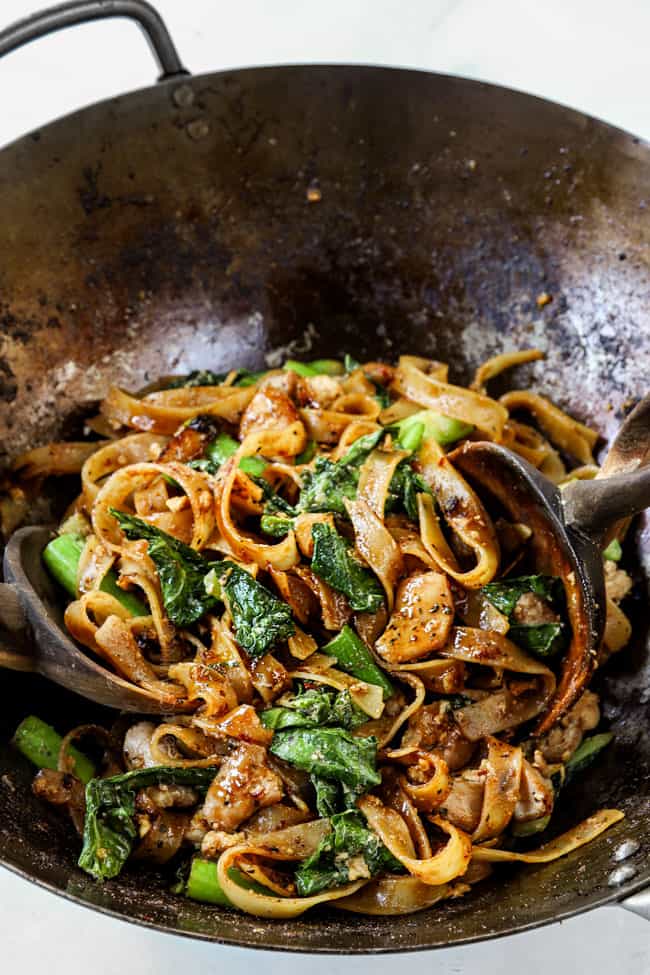
What is in Pad See Ew?
Pad see ew sauce Ingredients
To create an authentic tasting pad see ew sauce, I whipped up a cocktail of pantry friendly ingredients (pantry friendly to anyone that does much Asian cooking) to substitute for the more exotic ingredients. Thankfully, the exotic ingredients are easy to replicate.
- Oyster sauce: cannot be skipped! It is the base of almost ever stir fry sauce and adds that extra punch of flavor that cannot be replicated with other ingredients/sauces. Oyster sauce is a thick, brown sauce with a balance between sweet and salty with an earthy undertone, due to the oyster extracts. You can find oyster sauce in the Asian aisle of any supermarket for only a few dollars. Please use QUALITY oyster sauce such as Lee Kum Kee or Kikkoman. You truly can taste the difference and will be sorely disappointed with less quality brands.
- What if I’m allergic to shellfish? Or Vegetarian? If you’re allergic to shellfish/vegetarian, use LEE KUM KEE Vegetarian Stir-Fry Sauce instead of oyster sauce and fish sauce.
- Soy sauce + molasses + brown sugar: create an easy substitute for Thai sweet soy sauce. The soy sauce provides the saltiness, the molasses provides the signature flavor and the brown sugar provides the sweetness. Do NOT skip the molasses, it is what makes this pad see ew recipe taste authentic! Make sure to use low sodium soy sauce or your pad see ew be too salty.
- Fish sauce: this will not make your pad see ew taste fishy! Fish sauce is used in all Thai cooking for fabulous umami flavor. It’s like the umami of soy on steroids.
- Asian chili sauce: use your favorite chili sauce like Sambal Oelek or sriracha. Use as much or as little as you like but I don’t recommend skipping. Just 2 teaspoons won’t make your pad see ew taste spicy but will elevate it to a whole new level.
- Rice vinegar: balances the sweet and savory. Make sure to use unseasoned rice vinegar. If you don’t keep it stocked, you may substitute with white vinegar.
- Seasonings: dried basil, ground coriander, ground ginger, and pepper elevate this pad see ew recipe to the BEST!
Customizing Pad See Ew sauce
It’s important to taste the sauce so it can be adjusted to your personal preferences, but keep in mind the flavor will tone down a bit once combined with the noodles and chicken. To adjust your pad see ew sauce:
- for extra tang, add additional rice vinegar
- for sweeter, add additional brown sugar
- for spicier, add additional Asian chili paste
- for saltier, add additional fish sauce
Which Pad See Ew Noodles are best?
Pad see ew is made with flat, extra wide, rice noodles known as Sen Yai. The noodles give the pad see ew its wonderfully soft and delicately chewy characteristic texture. Rice noodles are made from rice flour and designed to absorb a good bit of the sauce they’re cooked in all while maintaining their perfectly al dente texture. The best part about rice noodles is that both fresh and dried varieties work well in this recipe:
Fresh wide rice noodles
Fresh wide rice noodles are the classic noodles used for pad see ew. They come pre-cooked with a tender, silky, springy texture. You will simply add them to the recipe when it calls for stir frying the noodles.
Unfortunately, fresh wide rice noodles have a few down sides. They will require an extra trip to purchase at an Asian market, and even then, they might not carry them. If you’re successful, they will need to be used within a couple days. Also, fresh wide rice noodles are more difficult to work with/more delicate than dried rice noodles and are prone to breakage.
Dried wide rice noodles
Dried wide rice noodles make a welcome accessible substitute for fresh rice noodles, plus they keep for longer than just a couple days. To use, they will need to be soaked in boiling water (cooked) and drained before stir frying. Once rehydrated, they’re essentially Sen Yai noodles – just not quite as wide.
Your grocery store will probably sell thin rice noodles (vermicelli) and 1/4-inch wide rice noodles, often called “Pad Thai” rice noodles. You’ll want to purchase the 1/4-inch wide rice noodles or even wider if they have them.
If you want more authentic extra wide rice noodles like the ones pictured in this recipe (still not as wide as Sen Yai though), then you may need to purchase them on Amazon. The Amazon noodles I used are A Taste of Thai Extra Wide Straight Cut Dried Rice Noodles. They are ⅜ of an inch (⅛ wider than Pad Thai Noodles) and give the dish a more authentic mouth feel. In fact, America’s Test Kitchen rated them the best dried wide rice noodles, with superior charring ability – exactly what we want in this recipe!
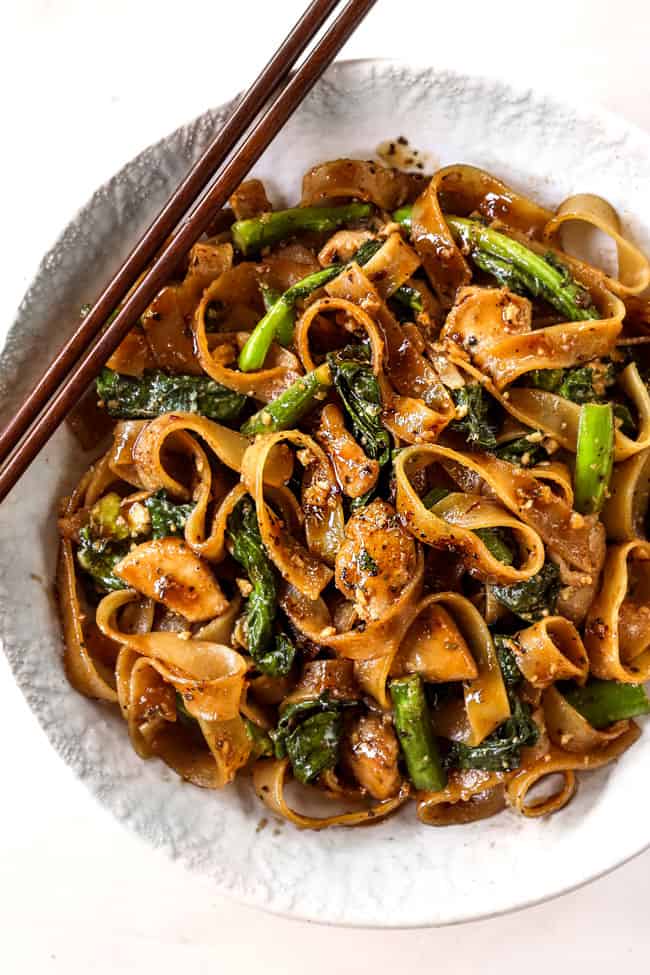
Pad Se Ew Protein Options
Pad see ew is typically made with chicken, beef, pork or shrimp but chicken is the most popular and is what I have used in this recipe. You may substitute the chicken with 8 oz. of your favorite protein.
For the chicken, I recommend chicken thighs because they are going to be cooked at relatively high heat and we don’t want them to dry out. Chicken thighs are dark meat and therefore inherently juicier and more forgiving. You may use chicken breasts, but take extra care not to overcook them or you’ll have dry chicken.
EGGS
Pad see ew is also made with eggs that are whisked first then cooked right in the skillet alongside the other ingredients. You may omit the eggs if they aren’t your thing, otherwise they add yet another complex layer of subtle flavor and texture.
Using Chinese Broccoli for Pad See Ew
The last key ingredient to pad see ew is Chinese broccoli, also known as Gai Lan or Kai lan. It adds a nice bright crunch and earthiness. It tastes similar to broccoli (especially the stalks) but it looks quite different. It has long, thick stalks that terminate in wide, thick leaves, much like bok choy, which hide small florets similar to broccolini.
Chinese broccoli is treated like bok choy in that the thick stalks are sliced and stir fried first for an added crunch and the leaves are added later.
Where do I find Chinese Broccoli? Chinese broccoli is likely not available at your local grocery stores or even specialty produce stores. It should be available at international/Asian grocery stores.
SUBSTITUTE FOR CHINESE BROCCOLI / GAI LAN
If you can’t find Chinese broccoli, don’t feel like you have to make a special trip to the Asian market. Instead, you can create your own version with broccolini and baby spinach or bok choy to replicate both the step and the leafy greens:
- Broccolini: slice the stalks in half vertically, then chop into 1-inch pieces to use in place of the Chinese broccoli stalks. Chop the florets and add them later when the leaves are added in the recipe.
- Baby Spinach or bok choy leaves: use in place of the Chinese broccoli leaves. Add after the stalks, when the leaves are added in the recipe.
Can I use regular broccoli?
Chinese broccoli is more stalks and leaves than florets, so regular broccoli isn’t the best substitute for an authentic experience, but it will still be delicious.
How to prepare Pad Se Ew Noodles
Fresh, wide rice noodles are authentic in pad see ew but they can be a very temperamental and prone to breaking. Here’s a few tips and tricks to work with them:
- Don’t fuss with cold noodles: before you warm the noodles, don’t attempt to break them apart. Cold noodles are stiff and prone to breaking, so handle them as little as possible.
- Warm the noodles: you don’t want to use cold noodles because they are less flexible and will break more easily in the stir fry. Instead, make sure your fresh rice noodles are at room temperature by either 1) transferring the noodles to a microwave safe dish, drizzling with a couple of tablespoons of water, covering with a damp paper towel and microwaving for 20 seconds or until warm; 2) transferring the fresh rice noodles from the refrigerator to a colander and quickly running hot tap water over them. Be sure to shake off any excess water and use them immediately.
- Flip don’t stir fry noodles. The more you handle the noodles, the more likely they are to break. Instead of stir frying, gently turn the noodles to combine with the sauce then flatten them against the wok to caramelize. This will prevent breakage and beautifully char the noodles.
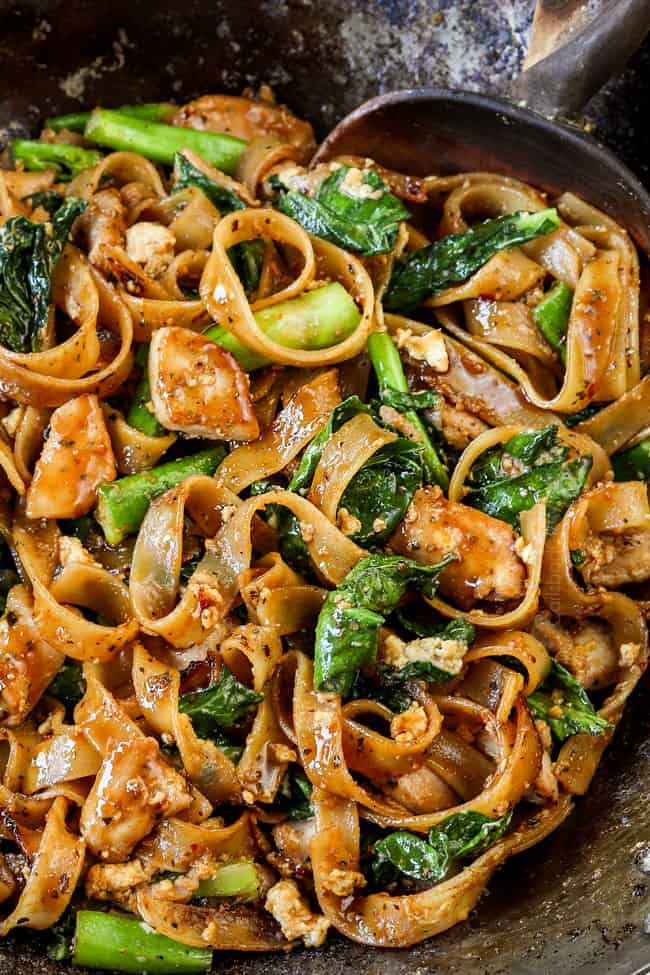
If using Dry Rice Noodles
Have you ever had pad sew ew with mushy rice noodles?! It completely ruins the experience; the noodles must be characteristically chewy! Luckily, this is easy to accomplish with dried rice noodles. In fact, I find dried rice noodles are much easier to work with than fresh with less breakage because I am able to control how pliable they are before they are stir fried – and bonus they are available at every grocery store!
The problem I encountered with dried rice noodles is that every brand recommends different soaking times accompanied by vague instructions such as “cover with hot tap water for 30 minutes” – but how hot is hot? Plus, 30 minutes is way too long to wait for a weeknight meal that otherwise is a super quick cook.
To eliminate most of the guess work, I found that covering the noodles in boiling hot water for 10-12 minutes was the ticket. You’ll want to stir the noodles once the boiling water is added and then a few times while they soak to prevent them from sticking together. Then drain the noodles thoroughly, rinse with cold water to remove the loose surface starch and toss them with a little bit of sesame oil for some extra nonstick insurance and for an extra layer of flavor.
As far as the 10-12 minute window, check the noodles at 10 minutes then continue to soak if needed. You want the noodles to be limp and pliable, but still slightly firm and slightly crunchy because they will continue to cook with the sauce. Once you add the sauce to the noodles in the wok, you can cook them to your desired texture.
The best pan for Chicken Pad Se Ew
If you have a wok, then it is ideal for this pad see ew recipe because it can safely reach high temperatures to char the ingredients. If you don’t have a wok, you will want to use a nonstick skillet, NOT stainless-steel or cast iron like I commonly use in stir fries. The noodles are extremely sticky and will stick and break against any other pan that’s not nonstick unless you use an exorbitant amount of oil which will make your pad see ew recipe unappetizingly greasy.
Instead, a nonstick skillet can still deliver a successful, charred pad sew ew by stirring the ingredients less and letting them nicely brown.
How to make pad see ew
Traditionally pad see ew is made in a wok over high powered gas burners that far exceed the ability of the humble kitchen stove. The extremely high temperature allows all of the ingredients to cook in one pan at once to achieve that signature charred flavor. At home, however, our stoves are limited, but we can still maintain high heat levels by decluttering our pans and cooking the pad sew ew in stages. Here’s how:
(Note: the full recipe with ingredient measurements is located at the bottom of the post.)
Step 1 – Marinate Chicken
- I use the word “marinate” very loosely. You are simply combining the chicken with a splash of soy sauce and a splash of sesame oil and setting aside while you prep the rest of your ingredients.
- This step of flavoring the chicken is important because the chicken isn’t added to the stir fry until the very end and so it won’t soak in a lot of the sauce – it needs to be independently seasoned.
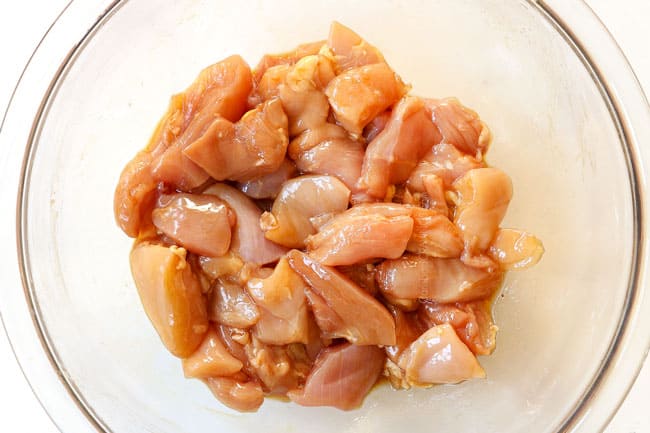
Step 2 – Make Sauce
- The sauce is easy to make with a quick whisking of pantry friendly ingredients in a small bowl. You’ll need oyster sauce, soy sauce, brown sugar, rice vinegar, chili paste, fish sauce, molasses, dried basil, ground coriander, ground ginger and pepper.
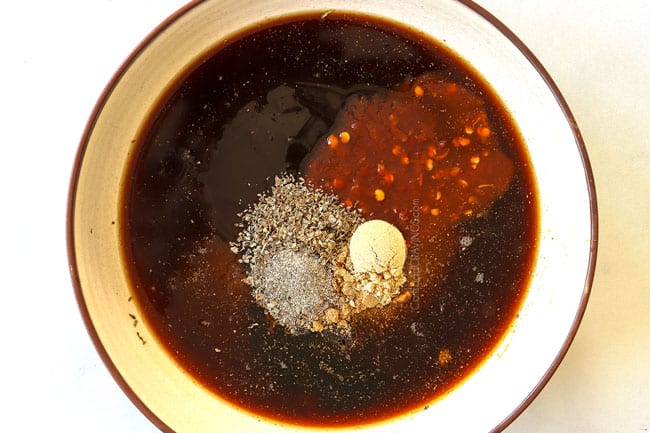
Step 3 – Prep Broccoli
- Slice any thick stalks of your gai lan in half so that the stalks aren’t any wider than 1/4-inch. For me, this was all my stalks. Chop the stalks into 1-inch pieces. Roughly tear any extra large leaves.
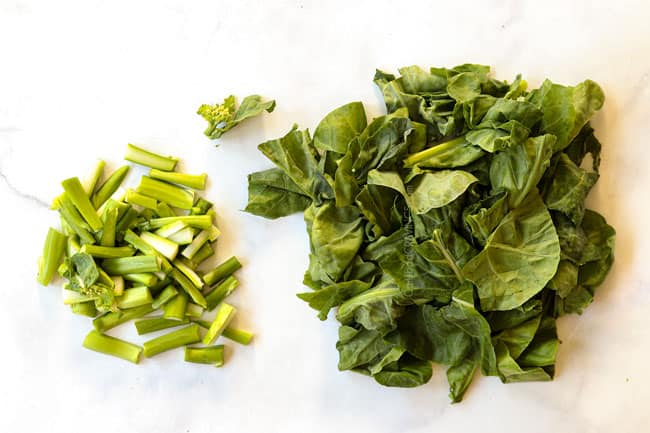
Step 4 – Stir Fry Chicken and Broccoli
- First, stir fry the chicken for one minute. It should be mostly opaque on the outside after one minute if you’re using high enough heat.
- Next, add the Chinese broccoli stems and stir fry until the broccoli is nearly tender and chicken is cooked through, about 3 to 4 minutes.
- Add the broccoli leaves and garlic and sauté 30 seconds. It’s okay if the leaves aren’t completely wilted because they will continue to wilt with residual heat.
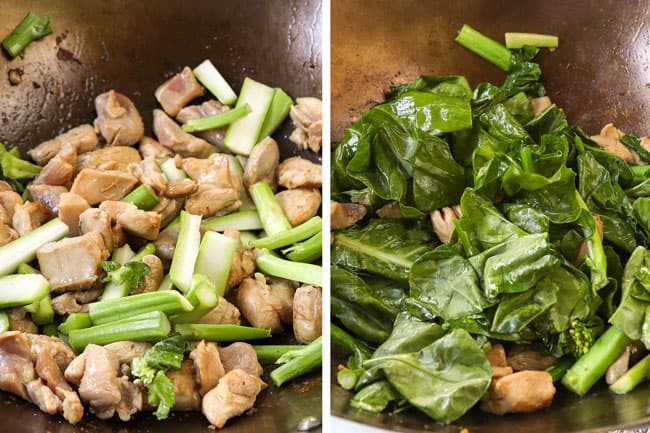
Step 5 – Scramble Eggs
- Reduce heat to medium and push everything to one side of the pan.
- Pour the beaten eggs into the empty side of the pan.
- Scramble just until cooked through – they should still be a little shiny, then stir into the chicken/broccoli. If you don’t have enough surface area to really scramble your eggs if using a wok, then it’s okay to scramble them while stirring into the chicken/broccoli.
- Transfer everything to a large plate. Scrape wok clean.
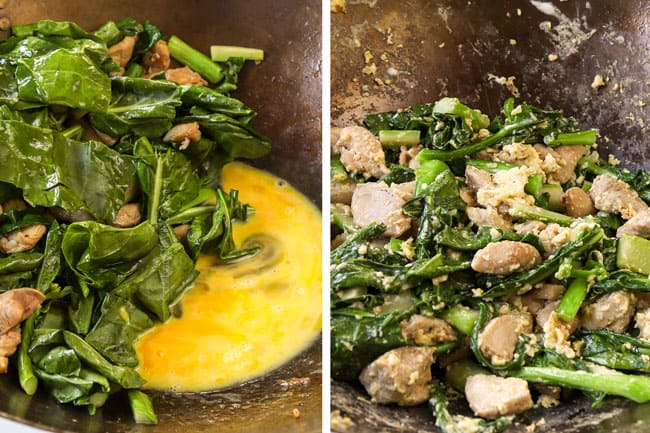
Step 6 – Caramelize Noodles
- Now the magic happens! IF USING A WOK, heat 2 tablespoons oil over high heat. IF USING A NONSTICK SKILLET, heat 2 teaspoons oil high heat. The oil helps prevent the noodles from sticking, so less oil is needed in a nonstick skillet.
- Add the noodles and sauce to the pan and toss to combine. Spread the noodles over the surface of the pan and let them sit without touching for about 30 seconds.
- Flip/stir the noodles and spread them out again; repeat 2-3 times until the noodles soak up the sauce, start to caramelize and reach desired tenderness.
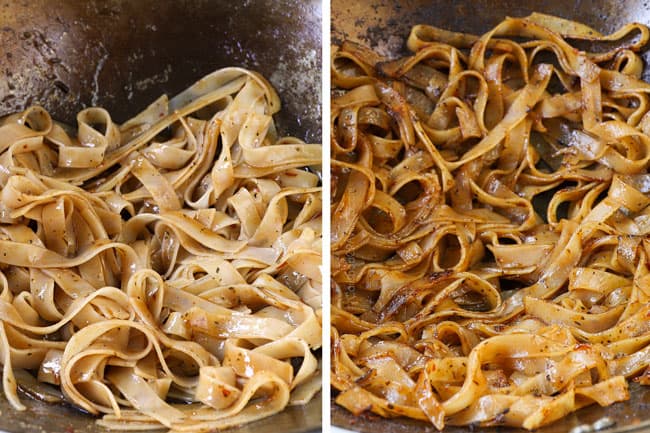
Step 7 – Combine
- Add the chicken mixture and toss to combine. Stir fry another 1 minute.
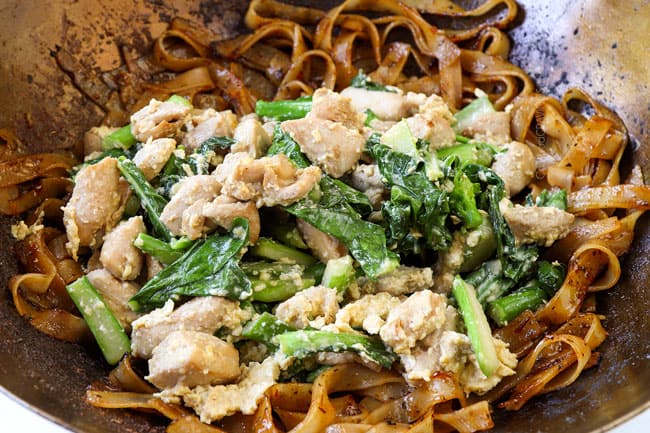
- Serve immediately.
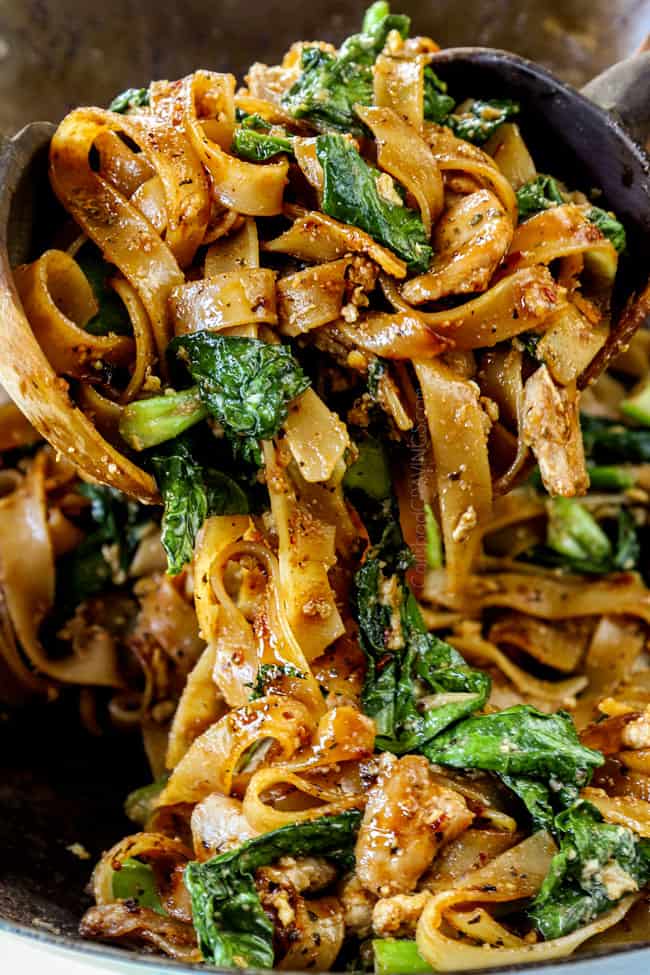
Pad See Ew Noodles: Tips for Success
- As previously discussed, don’t overcook/soak your rice noodles so they are perfectly chewy.
- For maximum efficiency, use the time while the chicken is marinating and the noodles are soaking to whisk together your stir fry sauce ingredients and chop your gai lan.
- Have your sauce, chicken and broccoli all prepped before you start cooking because the stir fry process just takes minutes – there isn’t time to stop and prep ingredients.
- If you don’t like heat at all, start with less than one tablespoon chili paste. I would say 1 tablespoon is about a 3 on the heat scale at a Thai restaurant, which is what most people order.
- Feel to customize the pad see ew to make it your own – swap the protein, veggies, etc. per variations below.
Chicken Pad See Ew Recipe variations
I love that making pad see ew at home allows you to customize it to your own tastes by adding different vegetables or proteins and making it tangier, sweeter or spicier.
- Veggies: Chinese broccoli is traditional, but you can add anything your belly desires! Bell peppers, mushrooms, carrots, bean sprouts, etc. would all be tasty.
- Spice it up. Serve with additional chili sauce or make your own chili vinegar by combining ½ cup distilled whit vinegar with 1 serrano chili, stemmed and sliced into thin rings. Let the vinegar stand for at least 15 minutes.
- Pad see ew with shrimp: use 8 oz. peeled, deveined medium shrimp. Toss the shrimp with the soy sauce and sesame oil like the chicken. Cook the shrimp separately from the broccoli, just until opaque, about 3 minutes, then transfer to a plate. Don’t add back to the work/skillet until ready to combine at the very end.
- Pad see ew with tofu: use extra-firm tofu. Start by draining excess moisture from the tofu by placing it in a pie plate, topping with a heavy plate and weighing down with 2 heavy cans (to release water). Set aside for 10 minutes then cut into ½-inch cubes and toss with the soy sauce and sesame oil.
- Pad see ew with beef: Use 8 oz. flank steak or top sirloin sliced into thin strips. Whisk together the soy sauce, sesame oil and 1 teaspoon cornstarch in a medium bowl then add the steak and stir to combine; let marinate while you prep the ingredients. Heat 1 tablespoon oil in the skillet over high heat. Add the beef to the skillet and line in a single layer and sear for 1 minute, flip and sear the other side Transfer beef to a plate.
- Pad see ew with pork: Use 8 oz. pork tenderloin sliced into thin strips. You’ll treat the pork very similarly to the steak. Whisk together the soy sauce, sesame oil and 1 teaspoon cornstarch in a medium bowl then add the pork and stir to combine; let marinate while you prep the ingredients. Heat 1 tablespoon oil in the skillet over high heat. Add the pork and stir fry just until cooked through. Transfer to a plate.
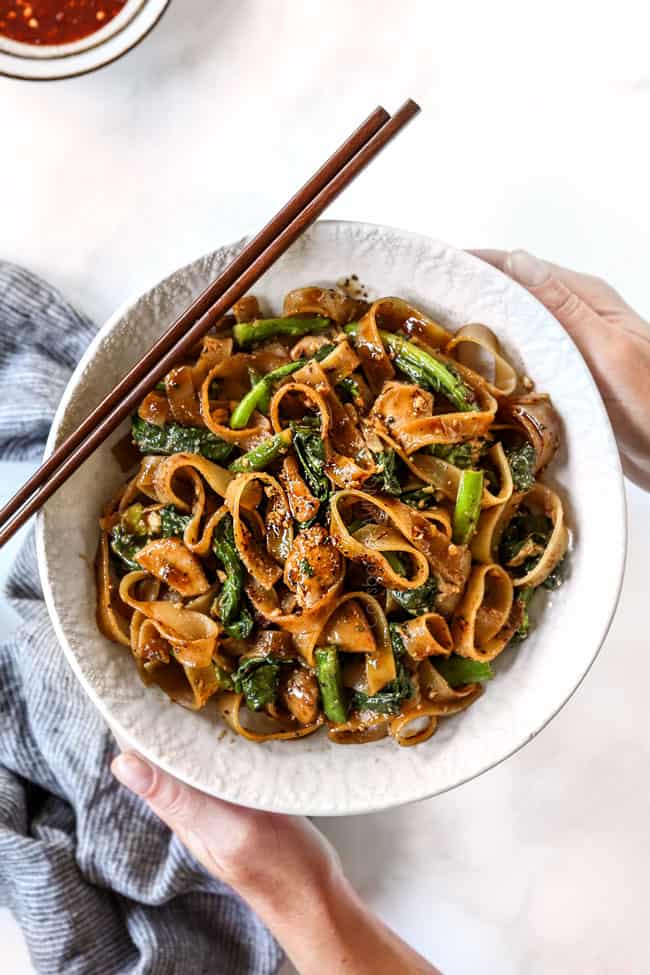
Storing and Reheating Pad See Ew Chicken
- Storage: Pad see ew is best eaten fresh because the noodles will continue to soak up the sauce until there’s no sauce left! The leftovers will be very flavorful and the noodles will still be chewy but they aren’t as appetizing because they taste much drier. Still, leftovers can be stored in an airtight container in the refrigerator for up to 5 days.
- Microwave: Transfer servings to a microwave-safe plate and splash with some water to add some moisture back to the dish. Cook for one minute, stir, then continue to heat at 30 second intervals until warmed through.
- Stove: For larger portions, reheat noodles gently over medium-low heat in a large skillet until warmed through, adding a splash of water as needed.
Can I freeze Pad See Ew?
No, pad see ew should not be frozen because rice noodles do not freeze well once combined with the sauce and will become an unpleasant texture when thawed.
Prepping Pad Se Ew ahead of time
You can prep all of the ingredients for pad see ew ahead of time so they can literally come together in minutes:
- Noodles: soak the noodles, rinse and drain, then toss with a drizzle of sesame oil. Store in an airtight container/plastic bag in the refrigerator for up to one week. Warm in the microwave for 20 seconds before using.
- Sauce: whisk the sauce ingredients together and store it in an airtight container in the refrigerator. Let the sauce sit at room temperature while preparing the stir-fry; whisk again before using.
- Veggies: chop the Chinese broccoli and store in an airtight container in the refrigerator for up to 2 days.
- Eggs: whisk the eggs together and store in an airtight container in the refrigerator.
- Cook! Within the next 48 hours, proceed with the recipe as outlined.
What to eat with Pad See Ew Chicken
Pad see ew is a meal-in-one complete with protein, veggies and starch, so it really doesn’t need much – if anything – to flush out the meal. Still, we love serving it with egg rolls for a complete Asian feast. It is also tasty with:
- Appetizers: we love mixing and matching our favorite Thai noodles with appetizers from all over Asia such as Spring Rolls, Chicken Lettuce Wraps, Pineapple Cream Cheese Wontons, Crab Rangoons, Chicken Satay, Potstickers, Pork Egg Rolls, Sesame Chicken Egg Rolls, Sweet and Sour Chicken Egg Rolls and Chinese Chicken Wings.
- Soup: Let the Asian feast continue with soup! I love to warm up to Tom Yum Soup, Tom Kha Gai, Laksa, Curried Butternut Squash Soup and Thai Noodle Soup.
- Salad: is a refreshing, bright side to the savory pad see ew. Some of our favorite Asian inspired salads include Crunchy Asian Salad, Chinese Salad, and Asian Pineapple Salad.
- Fruit: fresh fruit such as chopped pineapple is always an easy, welcome sweet stir fry side. Grilled Pineapple, Summer Fruit Salad, Perfect Fruit Salad, Creamy Grape Salad, and Pina Colada Fruit Salad are also fantastic.
More Asian Noodle Dishes to try
- Pad Thai: is the perfect way to use your remaining 8 oz of wide rice noodles from your pad sew ew! This pad Thai is made with chicken, veggies, and peanuts smothered in the most irresistible savory, sweet, salty, sour sauce.
- Singapore Noodles: are a popular Chinese dish from Hong Kong characterized by their curry infused rice noodles, juicy shrimp, vegetables and eggs, all bathed in a light umami, garlic, ginger sauce laced with fragrant curry.
- Yakisoba: is a popular Japanese noodle stir fry loaded with juicy chicken, julienned carrots, thinly sliced cabbage, crunchy bell peppers and aromatic garlic, ginger and green onions bathed in a fruity, spicy, sweet and tangy sauce. This dish is also a 30-minute meal!
- Spicy Korean Noodles: are a glass noodle stir fry loaded with tender beef, mushrooms, carrots, onions and bell peppers all bathed in a spicy soy, ginger, garlic sesame sauce. One of my favorite Asian noodles of all time!
- Coconut Curry Rice Noodles: uses thin rice vermicelli tossed in an aromatic curry sauce made with coconut milk and spiked with red curry, ginger, garlic, basil and lime juice. It’s super pantry friendly and comes together in just over 35 minutes.
- Vietnamese Noodles: are made with seasoned rice vermicelli noodles, juicy lemongrass chicken, fresh slivered vegetables and garnished with crunchy peanuts and fresh cilantro all drizzled with bright and tangy Vietnamese rice vinegar dressing. These Vietnamese Noodles are light yet comforting and make fantastic meal prep bowls.
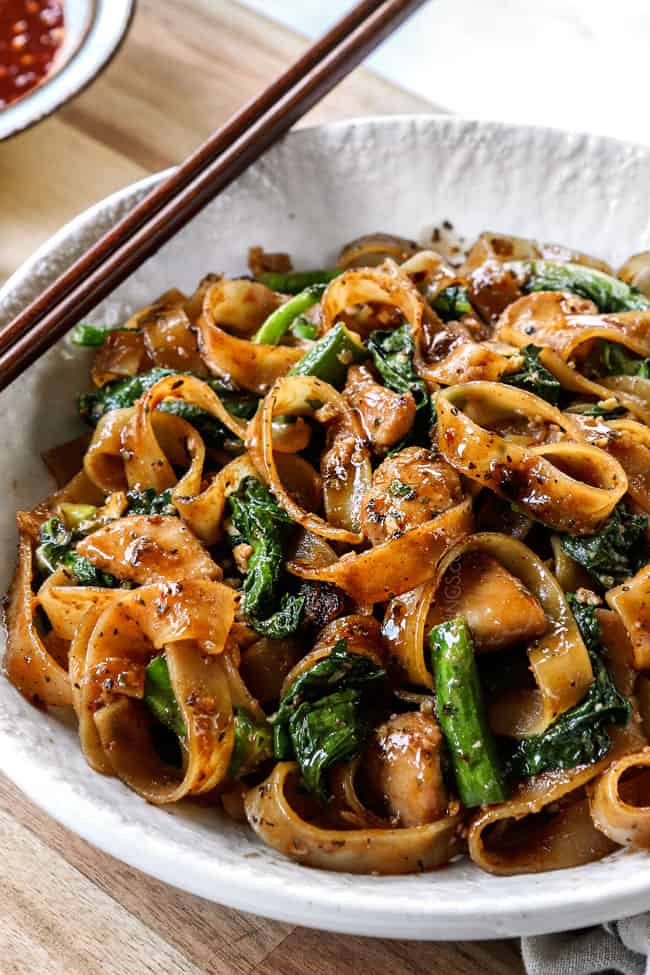
Want to try this Pad See Ew RECIPE?
Pin it to your Asian, Dinner or Chicken Board to SAVE for later!
Find me on Pinterest for more great recipes! I am always pinning :)!
©Carlsbad Cravings by CarlsbadCravings.com
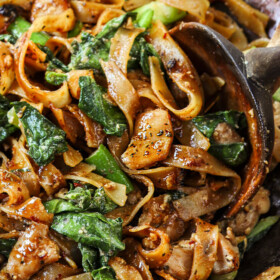
Pad See Ew (Chicken)
Save This Recipe To Your Recipe Box
You can now create an account on our site and save your favorite recipes all in one place!
Ingredients
Stir Fry
- 8 oz. wide rice noodles fresh or dried (see notes for substitutions)
- 12 oz. chicken thighs chopped into bite size pieces
- 1 tablespoon reduced sodium soy sauce
- 1 teaspoon toasted sesame oil
- 6 stalks Chinese broccoli/gai lan
- 4 cloves garlic minced
- 3 eggs whisked
Sauce
- 3 tablespoons oyster sauce
- 2 tablespoon reduced sodium soy sauce
- 2 tablespoons dark brown sugar may sub light
- 1 tablespoon rice vinegar
- 2-3 teaspoons Asian chili paste like Sambal Oelek
- 1/2 tablespoon fish sauce
- 1 teaspoon molasses *don’t skip!
- 1/2 tsp EACH dried basil, ground coriander, ground ginger
- 1/4 teaspoon pepper
Instructions
PREP
- Chicken: Combine chicken with 1 tablespoon soy sauce and 1 teaspoon sesame oil in medium bowl; set aside.
- Noodles (skip this step if using fresh noodles): Place the noodles in a large bowl and pour boiling water over top until completely submerged and give them a good stir. Wait 10-12 minutes until they are pliable but still al dente/crunchy, stirring occasionally so they don’t stick together. Rinse noodles in cold water, while separating any stubborn noodles with your fingers. Drain and toss in with 1 teaspoon sesame oil. Set aside.
- Sauce: Whisk all of the Sauce Ingredients together in a medium bowl; set aside.
STIR FRY
- Heat 1 tablespoon vegetable oil in a wok or large nonstick skillet over high heat. Once very hot, add chicken and stir fry 1 minute. Add broccoli stems and stir fry until broccoli is nearly tender and chicken is cooked through, 3 to 4 minutes.
- Add Chinese broccoli leaves and garlic and sauté 30 seconds.
- Reduce heat to medium, push everything to one side of the pan and pour beaten eggs in the empty side of the pan. Scramble just until cooked through then stir into the chicken/broccoli. Transfer everything to a large plate. Scrape wok clean.
- IF USING A WOK, heat 2 Tablespoons oil over high heat. IF USING A NONSTICK SKILLET, heat 2 teaspoons oil over high heat (the oil helps prevent the noodles from sticking). Add the noodles and sauce to the pan and toss to combine. Spread the noodles over the surface of the pan and let them sit without touching for about 30 seconds. Flip/stir the noodles and spread them out again; repeat 2-3 times until the noodles soak up the sauce, start to caramelize and reach desired tenderness.
- Add the chicken mixture and toss to combine. Stir fry another 1 minute. Serve immediately.
Notes
Tips and Tricks
- Oyster/fish sauce substitute: If you’re allergic to shellfish/vegetarian, use LEE KUM KEE Vegetarian Stir-Fry Sauce instead of oyster sauce and fish sauce.
- Soy sauce + molasses + brown sugar: create an easy substitute for Thai sweet soy sauce. Do NOT skip the molasses, it is what makes this pad see ew recipe taste authentic! Use low sodium soy sauce or your pad see ew be too salty.
- Egg noodles: if you can’t find wide rice noodles, try pappardelle! Cook according to package directions 1 minute shy of al dente.
- What noodles to use: pad see ew is made with flat, extra wide, rice noodles known as Sen Yai, which can be difficult to find, even at Asian markets; they are also difficult to stir fry without breaking. A welcome accessible substitute is dried wide rice noodles. You’ll want to purchase the 1/4-inch wide rice noodles (often called “Pad Thai” Rice Noodles) or even wider if you can find them. The Amazon noodles I used are A Taste of Thai Extra Wide Straight Cut Dried Rice Noodles. They are ⅜ of an inch (⅛ wider than Pad Thai Noodles) and give the dish a more authentic mouth feel. In fact, America’s Test Kitchen rated them the best dried wide rice noodles, with superior charring ability – exactly what we need!
- Don’t overcook dry rice noodles: check the noodles at the 6 minute soaking mark then continue to soak if needed. You want the noodles to be limp and pliable, but still slightly firm and slightly crunchy because they will continue to cook with the sauce. Once you add the sauce to the noodles in the wok, you can cook them to your desired texture.
- Warm fresh rice noodles: to reduce breakage of fresh rice noodles, bring them to room temperature before stir frying by 1) transferring the noodles to a microwave safe dish, drizzling with a couple of tablespoons of water, covering with a damp paper towel and microwaving for 20 seconds or until warm; or 2) transferring the fresh rice noodles from the refrigerator to a colander and quickly running hot tap water over them. Be sure to shake off any excess water and use them immediately.
- Chinese broccoli/gai lan substitute: gai lan typically can only be found at Asian markets. You may substitute with broccoli and baby spinach or bok choy leaves. Slice the broccolini stalks in half vertically, then chop into 1-inch pieces to use in place of the Chinese broccoli stalks. Chop the florets and add them later when the leaves are added in the recipe. Use baby spinach or bok choy leaves in place of the Chinese broccoli leaves.
- Chile vinegar: is often served alongside pad see ew at restaurants. You can make your own chili vinegar by combining ½ cup distilled white vinegar with 1 serrano chili, stemmed and sliced into thin rings. Let the vinegar stand for at least 15 minutes.
- Use the correct pan: if you have a wok, then it is ideal for this pad see ew recipe because it can safely reach high temperatures to char the ingredients. If you don’t have a wok, you will want to use a nonstick skillet, NOT stainless-steel or cast iron like I commonly use in stir fries. The noodles are extremely sticky and will stick and break against any other pan that’s not nonstick unless you use an exorbitant amount of oil which will make your pad see ew recipe unappetizingly greasy.
- Storage: pad see ew is best eaten fresh because the noodles will continue to soak up the sauce until there’s no sauce left! The leftovers will be very flavorful and the noodles will still be chewy but they aren’t as appetizing because they taste much drier. Still, leftovers can be stored in an airtight container in the refrigerator for up to 5 days. Microwave or warm in a skillet with a splash of water to add some moisture back to the dish.
PAD SEE EW with different proteins
- Pad see ew with shrimp: use 8 oz. peeled, deveined medium shrimp. Toss the shrimp with the soy sauce and sesame oil like the chicken. Cook the shrimp separately from the broccoli, just until opaque, about 3 minutes, then transfer to a plate. Don’t add back to the work/skillet until ready to combine at the very end.
- Pad see ew with beef: use 8 oz. flank steak or top sirloin sliced into thin strips. Whisk together the soy sauce, sesame oil and 1 teaspoon cornstarch in a medium bowl then add the steak and stir to combine; let marinate while you prep the ingredients. Heat 1 tablespoon oil in the skillet over high heat. Add the beef to the skillet and line in a single layer and sear for 1 minute, flip and sear the other side Transfer beef to a plate. Don’t add back to the work/skillet until ready to combine at the very end.
- Pad see ew with pork: use 8 oz. pork tenderloin sliced into thin strips. You’ll treat the pork very similarly to the steak. Whisk together the soy sauce, sesame oil and 1 teaspoon cornstarch in a medium bowl then add the pork and stir to combine; let marinate while you prep the ingredients. Heat 1 tablespoon oil in the skillet over high heat. Add the pork and stir fry just until cooked through. Transfer to a plate. Don’t add back to the work/skillet until ready to combine at the very end.
- Pad see ew with tofu: use extra-firm tofu. Start by draining excess moisture from the tofu by placing it in a pie plate, topping with a heavy plate and weighing down with 2 heavy cans (to release water). Set aside for 10 minutes then cut into ½-inch cubes and toss with the soy sauce and sesame oil before stir frying. Transfer to a plate and don’t add back to the work/skillet until ready to combine at the very end.

Did You Make This Recipe?
Tag @CarlsbadCravings and Use #CarlsbadCravngs
Leave a Review, I Always Love Hearing From You!
Carlsbad Cravings© Original
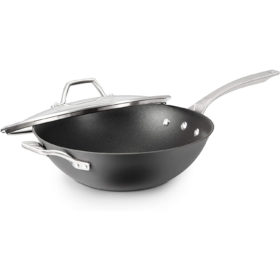
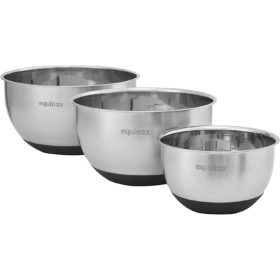
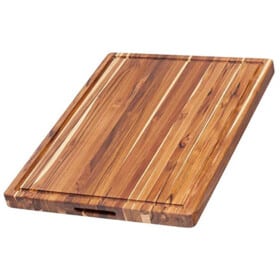
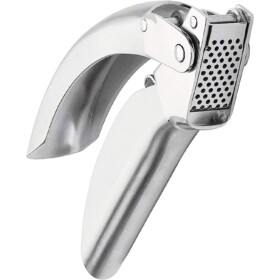
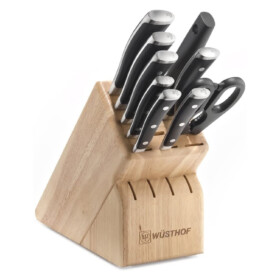
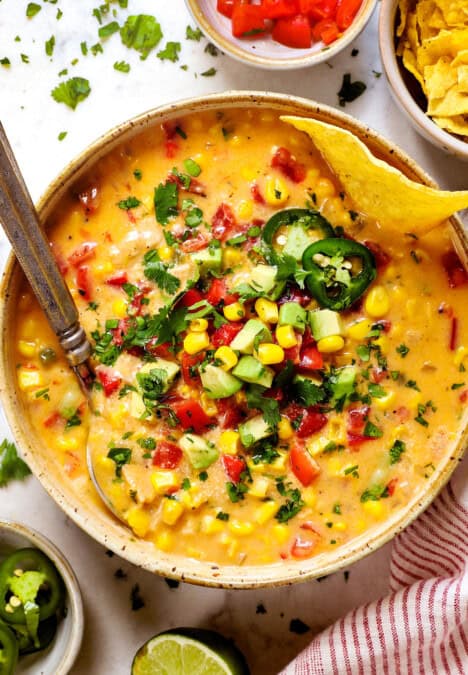
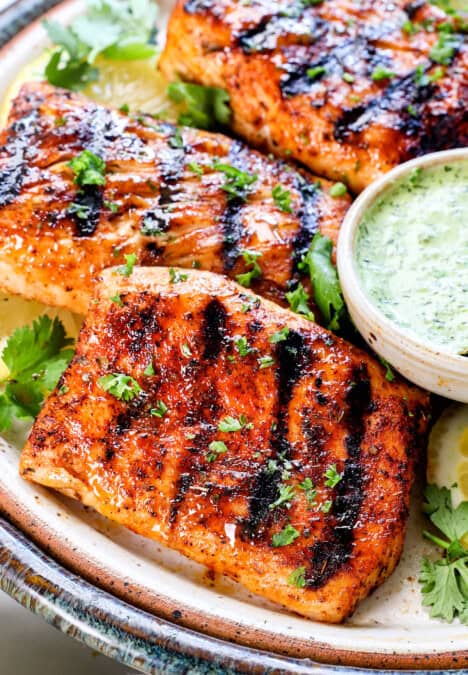
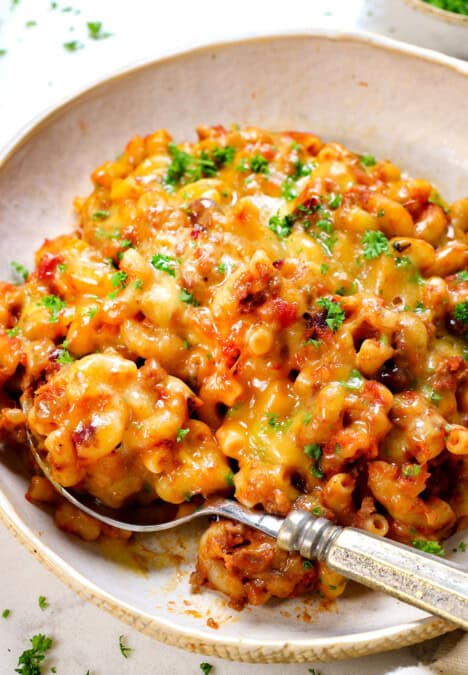
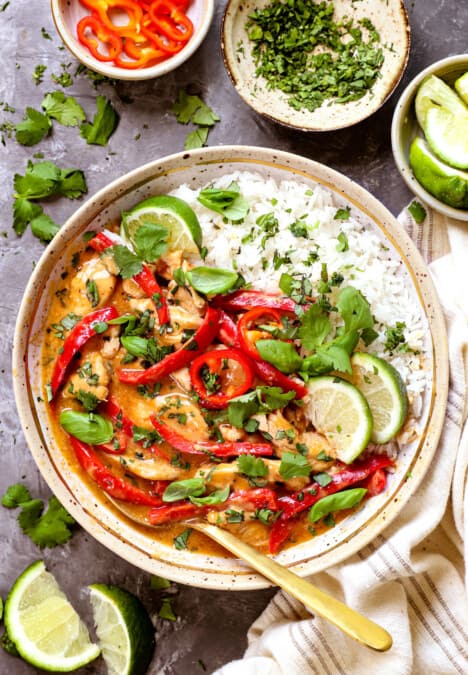
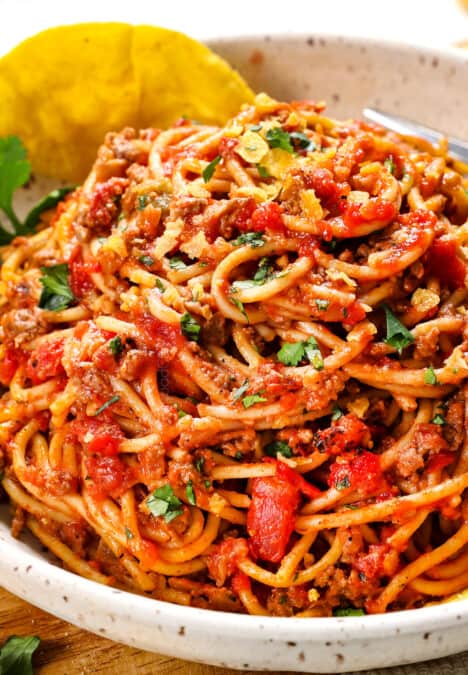
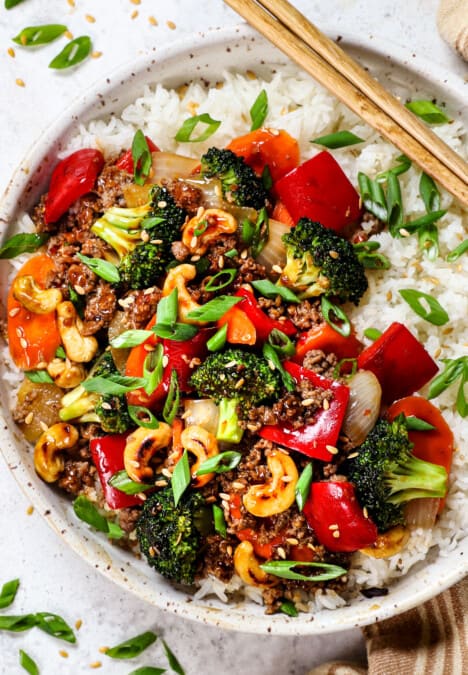

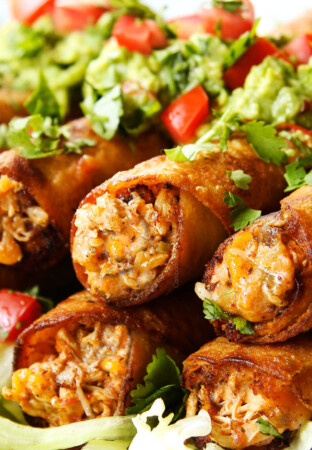
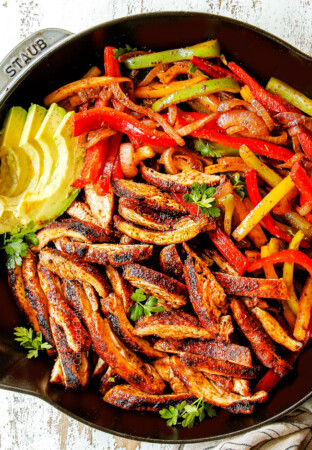
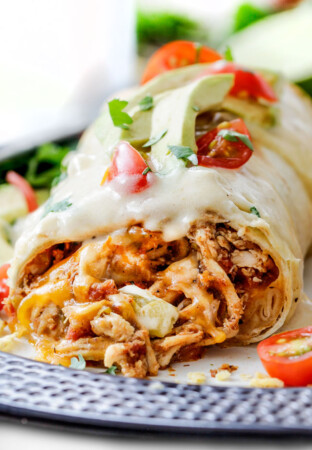
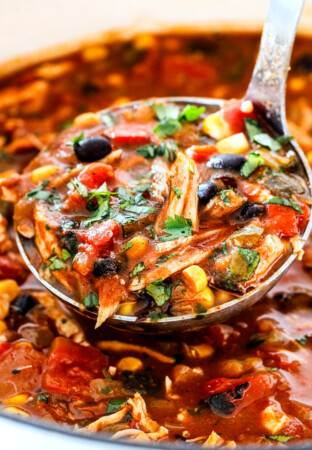
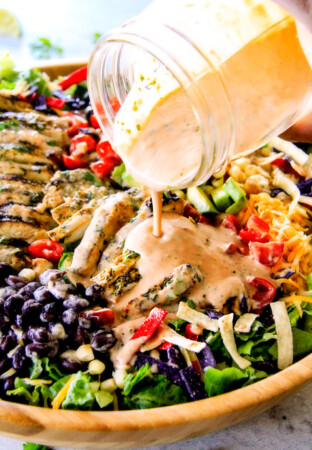
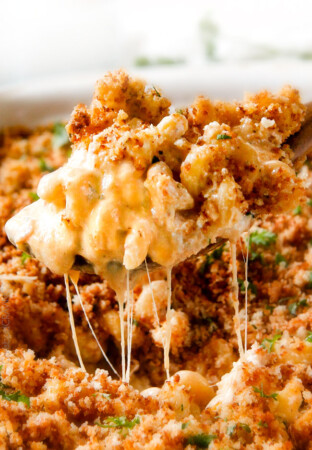
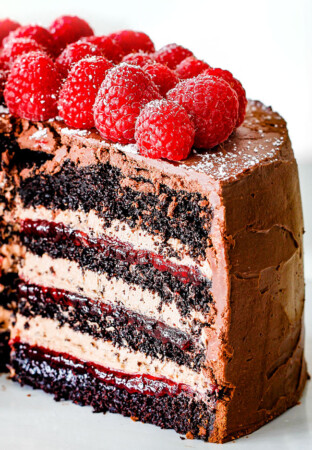
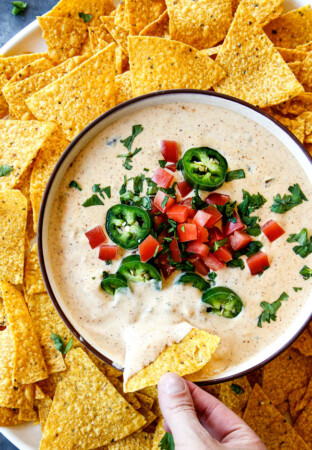
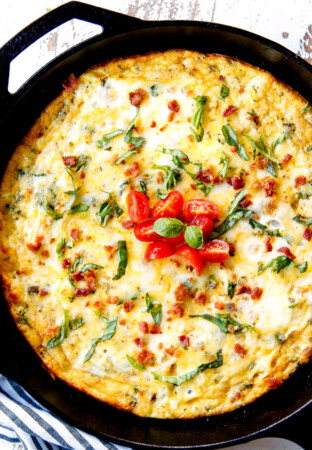
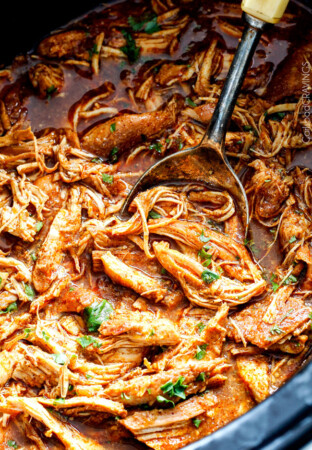
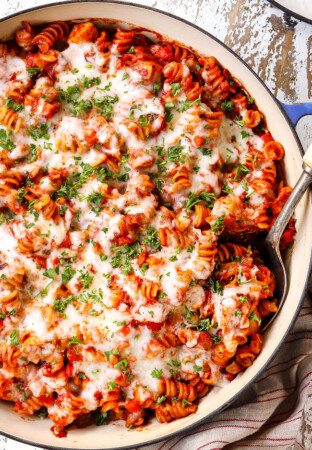
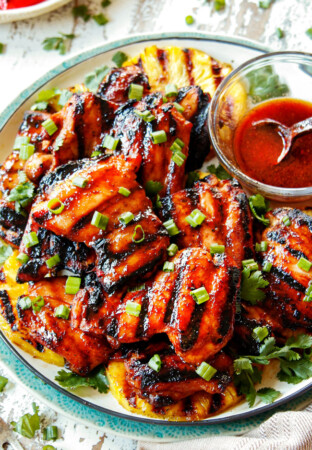
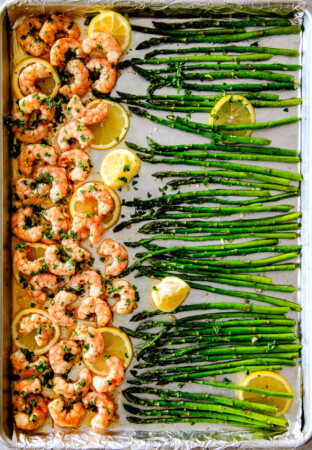
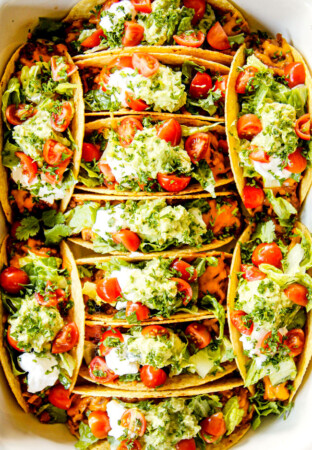
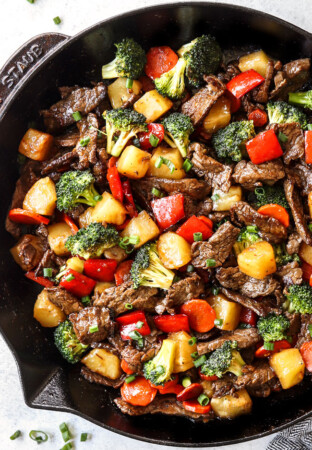
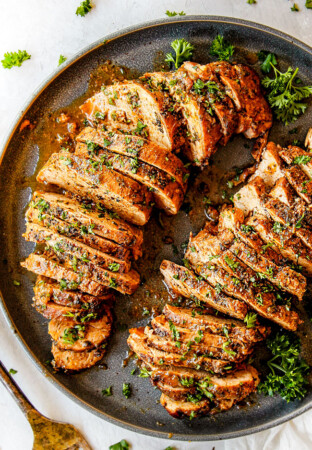
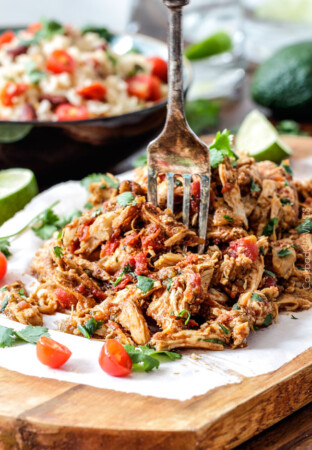
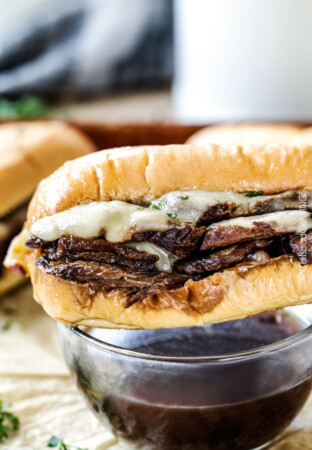
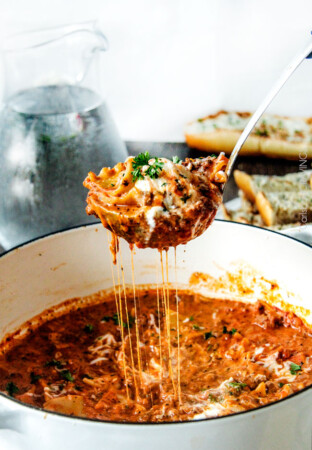

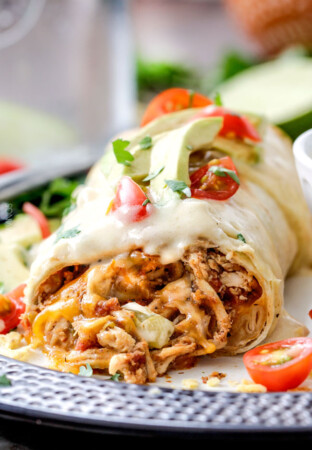
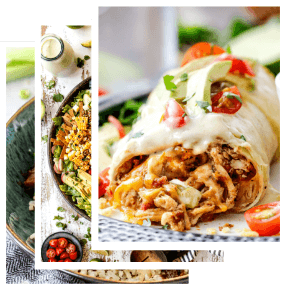
Hannah K says
Thanks for all the time, care and detail you clearly put into this recipe! This is the first stir fry recipe I’ve made that actually tastes pretty close to what you can get in a restaurant, and pad see ew is one of my favorites so I’m so happy to be able to make it at home. Will definitely be making this again. Thank you!!
Jen says
You are so welcome Hananah, thanks for taking the time to comment! I’m so pleased it will be a repeat!
Kristy says
Do you have a “skip to recipe” option?
Jen says
My site is going bonkers and it’s temporarily disappeared on mobile. I have a new site design coming next week whish will solve all the issues.
Courtney says
If I have Thai sweet soy sauce, I assume it will replace the brown sugar, molasses, and regular soy sauce – but in what quantity?! Thank you!
Jen says
Hi Courtney, you could use it in place of the brown sugar (you still may need to add a little sweetener), but I would still use molasses and soy sauce. Enjoy!
tim says
Experienced in the kitchen with a discerning palate, loved this recipe! Madea few addtions/modifications based on product availability…in the house today. Sub regular broccoli but steamed for 5 minutes, then chilled. Did 1.5x on the sauce as I always over portion the other ingredients as I did about 12 oz noodles.
Stirred in a large handful of basil and teaspoon of thai just befchili pepper sauce https://pickledplum.com/crazy-hot-chili-garlic-sauce/ before serving.
Carlsbad, love your recipes for inspiration. I search Pinterest for what sounds good and so many times, it ends up being you.
I spent 20 years in San Diego before Houston; PB, Normal Heights.
Jen says
Hi Tim! So sorry for not getting back to you sooner but just wanted to thank you for your sweet review! SO thrilled that you are enjoying my recipes! Your additions to this recipe sound yummy! Hope you are well and have a wonderful Thanksgiving!
Lou says
Where are the eggs in your recipe
Jen says
Under the stir fry ingredients.
Elyse K says
My husband and I raved over this! We both said we would 100% pay for this in a restaurant!!! Thank you so much for this new favorite!
Jen says
Wow!! I am so glad you and your husband thought it was restaurant quality!
Jason E says
Pad See Ew is my favorite dish, and I always thought it would be too difficult to make for the family without ruining the authentic flavors I love, but this hit the mark. The only adjustment I want to make, is it seems a bit lacking on amount of sauce in the end, but I am a saucy person, I am slightly worried about just increasing the amount of sauce as that may sweeten it up too much. I was thinking of increasing sauce by 50% and hold that back until the last 1 minute mix.
Jen says
I’m so glad it captured the flavors you were looking for! I think your sauce idea sounds great!
Rose says
Hi there… if I have Sweet Soy Sauce may I omitt the soy,brown sugar and molasses?
Jen says
Yes omit the, enjoy!